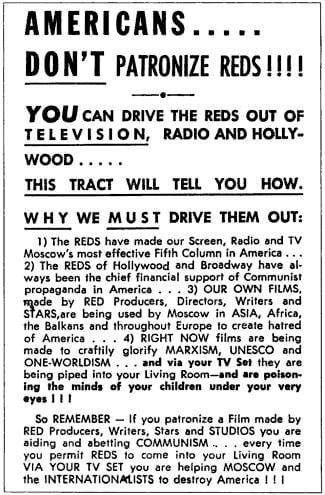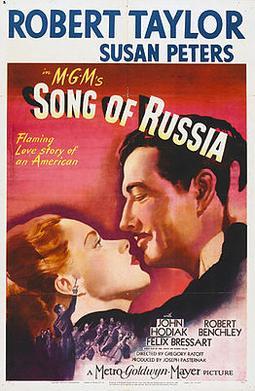In this article I will look at the cinema produced in the United States supporting the Allies during WWII, in this case the Soviet Union. After the war the political climate changed and HUAC (House Un-American Activities Committee) blacklisted actors, directors and screenwriters involved in making such films despite the fact that throughout the 1930s many films were made in a style sympathetic to the American working class, the realist style known as social realism. Therefore, the pro-Soviet films were basically a shift in location and accent, but not any dramatic change in content. I will look at examples of these social realist films made in Hollywood in the 1930s, films that are a far cry from contemporary Hollywood output in their depictions of ordinary people’s everyday struggles for survival.

First Red Scare
Initially the Bolshevik Revolution in Russia had ignited the first Red Scare in the United States. Massive strikes and race riots added to the fear of the spread of communism in America.
Films were made that depicted strikes and mail bombings as the work of Bolshevik activists, as external threats to a democratic nation, e.g. Virtuous Men (1919) [1], Dangerous Hours (1919) [2], and The Great Shadow (1920) [3]. The worldwide communist revolution failed to materialise, and the prosperity of the 1920s in the USA diminished criticism of the capitalist system. After the 1929 Great Crash, Hollywood made films which caricatured the Soviet Union, like Trouble in Paradise (1932) [4] and Ninotchka (1939) [5].
However, things soon changed with the onset of the Second World War. According to Andrei Cojoc:
“The United States’ attitude towards the Soviet Union shifted on 22nd of June 1941, when Hitler began sending his Panzers towards Moscow, and after December ’41 the alliance between the two opposite systems was a necessity. So, the American’s perceptions of the Soviet Union had to be shaped overnight so that FDR could receive popular support for entering the war on the Soviet Union’s side.”
The OWI (Office of War Information) was set up by executive order on 12th of June 1942 and put in charge of “advising Hollywood about the means to support the war effort”. A set of guidelines were formulated in a “Manual for the Motion Picture Industry” such as:
“In a comprehensive third chapter of the handbook, called “Who are our allies”, “Tinsel Town” is advised to learn more about their former enemy, the Soviet Union: We must €fight the unity lies about Russia (..), emphasize the might and heroism, the victory of the Russians. In a most surprising manner we find out that ‘we Americans reject communism, but we do not reject our Russian ally’ (United States, 1942).”
Pro-Soviet movies
https://www.globalresearch.ca/america-1940s-pro-soviet-films-social-realist-cinema-usa/5787377

Recent Comments